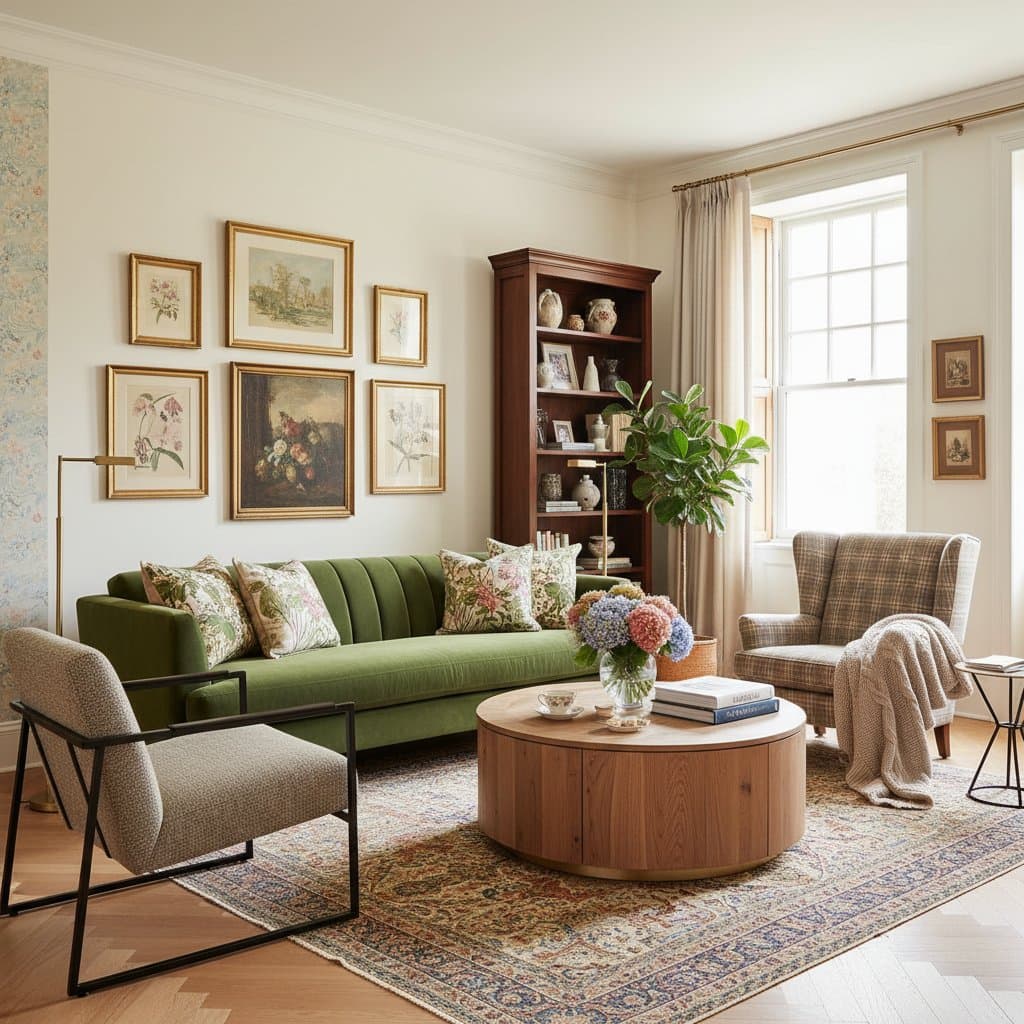Young Designers Revive Grandmillennial Traditions
Grandmillennial design captures a sense of nostalgia while adapting to contemporary needs. This approach counters the prevalence of minimalist interiors by incorporating elements such as floral wallpapers, fringed lamp shades, and inherited furniture pieces. Young designers reinterpret these features to suit current homeowners who seek warmth and character in their spaces.
This article examines the ways in which emerging professionals are updating grandmillennial traditions. It delves into the reasons behind the style's popularity in today's market. Through detailed analysis of standout projects, the discussion covers the integration of heritage with innovation, material selections, and adaptations of classic patterns for everyday use.
1. Best Overall Revival: The Heritage Apartment by Clara Voss Interiors
Project Name: The Heritage Apartment by Clara Voss Interiors
Overview: This residence exemplifies the fusion of floral textiles, antique forms, and practical modern elements into a unified, everyday living environment.
Strengths:
- Achieves ideal harmony between classic patterns and updated illumination
- Masters the art of combining diverse patterns and surfaces
- Fosters a welcoming and relaxed ambiance
Limitations:
- Bespoke furnishings may increase expenses
- Demands precise selection to maintain visual clarity
In-Depth Analysis:
Clara Voss transforms grandmotherly influences into sophisticated settings by combining delicate chintz coverings with polished brass hardware and straightforward cabinet designs. Each area resembles a thoughtfully assembled archive of recollections that supports routine activities. For example, the living room unites patterned armchairs with a simple coffee table, striking a balance between coziness and restraint. This work establishes a benchmark for grandmillennial aesthetics that evoke sentiment without sacrificing modernity.
2. Most Innovative Fusion: The Modern Manor by Elise Hart Collective
Project Name: The Modern Manor by Elise Hart Collective
Overview: This design boldly integrates mid-century restraint with the ornate allure of grandmillennial elements.
Strengths:
- Skillfully merges streamlined and decorative components
- Incorporates eco-conscious, regionally obtained resources
- Provides a refined and usable arrangement
Limitations:
- Certain unconventional surfaces might polarize preferences
- Some surface treatments necessitate expert application
In-Depth Analysis:
Elise Hart's Modern Manor demonstrates the evolution of grandmillennial principles while preserving their essence. The interior includes plush velvet window treatments and sculpted accents alongside geometric seating and subdued colors. The outcome delivers opulence in a subtle manner. Details such as artisan-painted flooring and repurposed timber consoles underscore meticulous workmanship. This initiative illustrates the compatibility of environmental responsibility and historical reverence, yielding areas that endure both morally and aesthetically.
Essential Elements for Adopting Grandmillennial Design
Selecting Superior Materials
Prioritize genuine components to build lasting appeal. Opt for sturdy timber constructions, natural fiber textiles like cotton or linen, and authentic metal or pottery highlights. Such choices develop a pleasing patina over time and deliver the sensory depth inherent to classic environments.
Coordinating Patterns and Hues
Layer motifs to add dimension in grandmillennial rooms. Integrate botanical designs, checked fabrics, and scenic prints for richness. Offset intricate schemes with serene backgrounds to avoid overload. Soft, subdued shades complement enduring themes effectively.
Managing Scale and Balance
Consider dimensions when blending eras. Position a substantial vintage cabinet as a focal point, complemented by compact contemporary items for equilibrium. Aim for cohesive integration rather than identical styles.
Ensuring Practical Utility
Aesthetics alone fall short; daily demands require resilience. Select pieces with integrated storage options, removable protective covers, and robust coatings. Grandmillennial arrangements must support active use alongside visual elegance.
Incorporating Individual Flair
Personalization elevates the style's appeal. Showcase family heirlooms like porcelain sets, stitched artworks, or vintage literature stacks. These additions convert styled interiors into intimate, significant retreats.
Key Considerations for Grandmillennial Implementation
Grandmillennial design merges historical decor with present-day ease, featuring retro motifs, vintage artifacts, and artisanal finishes. It honors the past while aligning with evolving routines.
This style adapts seamlessly to contemporary dwellings through measured integration. Combine heritage textiles with efficient fixtures or employ classic objects sparingly as highlights. Such methods preserve a sense of perpetuity over datedness.
Introduce the aesthetic gradually via fabric updates. Incorporate botanical pillows, printed drapery, or detailed bedding. These modest adjustments infuse warmth affordably and reversibly.
The approach suits diverse architectures beyond antique structures. It enhances sleek urban flats by introducing varied surfaces and designs that impart personality to sparse setups.
